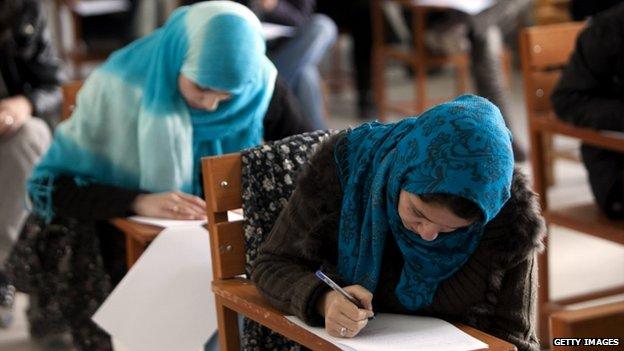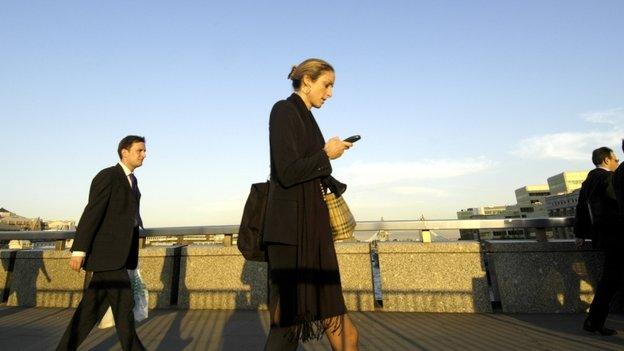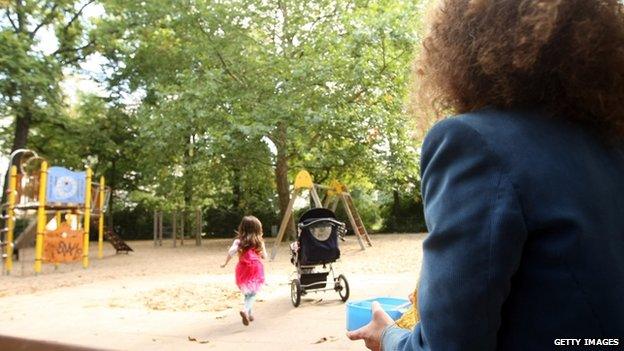How do you get women into the workplace?
- Published

Women graduates now outnumber men but they face obstacles to being successful in the workplace
If as many women were involved in work as men, then global output could be boosted as much as 40%.
For countries like Japan, getting women into work is a policy priority as it could raise GDP by some 14%.
That's roughly what adding women to the US workforce added to America's GDP in the post-war period.
Yet, year after year, it seems that the gender gap persists. The World Economic Forum gender gap report estimates that it would take 80 years at the current pace of progress for women to achieve parity in the workplace.
So, why if the economic case is evident, would it still take so long?
That's the question that we posed on In the Balance this week to a panel of women who have made it in the world of work.

Education is paramount, the discussion panel agreed
I was joined by Cherie Blair - wife of the former British prime minister and a top lawyer in her own right, clothing retailer Eileen Fisher, entrepreneur Marieme Jamme, and Politea director Dr. Sheila Lawlor.
Education key
It was telling that each of them had a light bulb moment about gender in the workplace.
Cherie Blair said that she realised that even though she had attained the top First in law, it was not enough. Sheila Lawlor is more of the view that her experience shows that the system is largely meritocratic.
But, they all agree that education is the pre-requisite.
That was evident in Marieme Jamme's story. She was sold into prostitution in Senegal and escaped to France where she finally gained the chance for an education.

The gender wage gap and the glass ceiling are some of the other concerns
Even though her background is worlds apart from New York-based clothing retailer, Eileen Fisher, they both emphasised the importance of mentorship in their careers.
It takes more than mentorship of course. Capital to start a business is also key, which is what foundations like Cherie Blair's are offering.
Training, such as to use technology, is another way of equipping more women for work.
For Marieme Jamme, the belief that African women can stand on their own two feet is more reflective of the challenge now rather than a reliance on aid or charity.
State role
On those points, the panel seem agreed. But, what was more contentious was the role of the state and which measures would help.

How much should the state be helping with child care?
Child care, maternity and paternity leave could all help women get into work, for instance. But, the panel disagreed over the extent that the state should be prescriptive.
Still, they ended up agreeing that women need to be able to make their own choices about work or not, as it were.
And it's a decision that will have considerable economic impact since the WEF estimates that there are now more women than men graduating from universities around the world for the first time.
Of course, staying in work is another issue. The gender wage gap and the glass ceiling are other concerns since there are still few women at the top.
The persistent gender gap that can't be explained by differences in education or experience is another huge topic that will, I think, require its own programme.